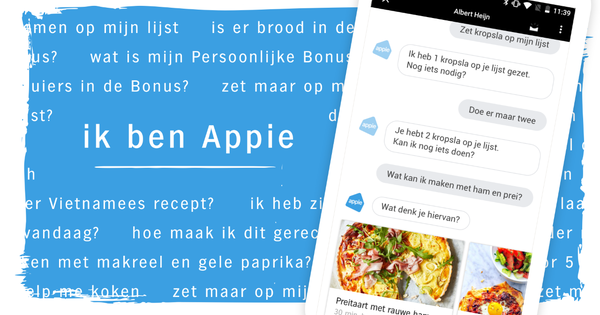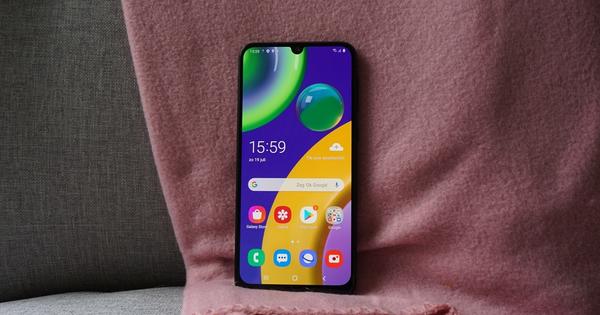We probably don't need to introduce you to Google Maps and Google Earth anymore, at least not when it comes to looking up locations or routes. But with the right tools, techniques and services, a lot more is possible with these services.
Tip 01: Maps & Earth
The boundary between Google Maps and Google Earth has become quite blurred in the meantime. Switching from Google Maps to an Earth view is very easy by using the Satelliteicon. With the 3Dicon allows you to make a virtual flight over the entire globe and when you hold down the Ctrl key, the image tilts on its axis. In a Chrome browser, you can view the latest version of Google Earth, including 3D- and Street View-images. Click here on the hamburger icon and choose Institutions if you the Flight animation speed want to adjust or when you – on a powerful PC – want to set a larger memory cache for even more details.
If you want to import kml files, you must first enable this option, then you can retrieve such a file via My places. In Google Earth mobile app you can get kml files directly via Import my places / Kml file. At the bottom of this webpage you will find a whole series of interesting kml files.

Tip 02: From Maps to gpx
You obviously know how to plan a route in Google Maps, but how do you put those instructions in a gpx file so that you can transfer it to a handheld GPS, for example? For this we make handy use of the free web app at www.mapstogpx.com. You just need to paste the link to your Google Maps map with the route here. You get such a link as follows: go to Google Maps and plot your route. Click on the menu icon and choose Share or embed map / Copy link. The (shortened) url is now in the Windows clipboard which you can paste into MapstoGPX with Ctrl+V. In the web app, click on the desired options (such as Track Points, Route Name or one of the other options under Advanced Settings - make sure that GPX Output checked – and confirm with Let's go. The gpx file will be downloaded. The easiest way to get the file on your GPS is via EasyGPS. Get the file from File / Open, make sure your GPS is connected to your PC and choose GPS / Send to GPS, after which you set the correct make and model and the desired options. Another way is to copy it yourself, manually, to your connected GPS.
Convert your Google Maps route into a GPSX file, ready for your handheld GPSTip 03: Interactive map
There are countless so-called mash-ups: web apps or services that combine information from different sources and present it as one geographical whole. From tip 8 we teach you how to make your own maps and mash-ups, but warm up with some nice examples, such as those on the collection site Maps Mania. At the bottom right, in the archive, you can browse through a chronological list of many hundreds of interactive, historical maps that were often very current at the time of publication (from April 2005 to the day you read this).
Of a completely different nature is the mash-up Gmap Pedometer. Here you can plot cycling and running routes on a map, after which the app will calculate the exact distance and the number of calories burned based on your weight. It is also useful that you can set a height profile.
There are also real gaming sites based on Google Maps, for example Geoguessr. At Geoguessr you will be shown random Google Street View photos of which you have to guess the location. With each answer you see the correct location and you learn how many kilometers you were away from it. At Pursued you are kidnapped and you must use Google Street View (and edited images) to try to find out in which city you are as quickly as possible. Smarty Pins asks you questions about certain locations, with the intention that you always point to the correct location in Google Maps.
A search for 'google maps games' or 'google maps mashups' will yield even more interesting sites.

Tip 04: Record route
With the help of the now free tool Google Earth Pro (available for Windows and MacOS) you can record video images, both in real time (based on mouse movements and keystrokes), and on the basis of an existing tour. We look at how you can record images based on an existing tour.
Position the map as desired and click on the button Record a tour. A floating bar appears with a red start button and a microphone button to record commentary. You can now use the navigation buttons or double click in the sidebar (choose Display / Sidebar) at the desired location in the section My places; You can enter these locations here in advance. Click the red button again to end the recording and view the result. Use the diskette icon to save the tour after which it will be placed in the section My places appears.
You can also proceed differently: click on the button Add path and mark the various locations. Then you put together a tour via the button start tour, right below the window Places.
 With Google Earth Pro you can turn a flat route into an engaging video
With Google Earth Pro you can turn a flat route into an engaging video Tip 05: GPS route
You can also convert a saved route on your GPS to a Google Earth tour. On a modern walking GPS, such as Garmin's, this normally works without much effort. You then connect the GPS with a USB cable, so that your GPS – if all is well – shows up in the Explorer. Here you will find some gpx files, perhaps in the folder \Garmin\GPX (your current route is probably in the \Current). Copy the desired file to your PC and launch Google Earth Pro. Go to File / Open and choose GPS […] in the drop-down menu and point to your file. Then open GPS device / Tracks on the left and select the appropriate track. Through start tour view the route and save it if necessary My Places. By the way, you may also be able to access your GPS directly, via Tools / GPS.

Tip 06: Save video
How do you convert that recorded tour into a video file? Through the menu Tools / Movie Maker – make sure you have closed the tour recording bar first! A dialog box will appear where you can set all kinds of parameters for your video. That goes from QVGA (320x240) until UHD (3840x2160), but also custom is possible, so that you can Image size and the number Frames per second can set. Furthermore, you indicate the desired Image quality and the File type on, like H.264 (.m4v), VP9 (.webm) or MJPEG (.mp4). At the top you choose between A saved tour (which you will find at My places) and Live navigation with mouse and keyboard. You start the recording with Making a movie, a process that can take some time. See the result with a free tool like VLC Media Player.

Tip 07 Create image overlay
You can even upload your own maps or plans to your GPS. You must of course first scan non-digitized images, whereby the optimal scan resolution corresponds to the display resolution of your GPS. With a Garmin Oregon, for example, that is 155 dpi. Save the scan as jpg. If you are dealing with a PDF, you can still convert it to a jpg file with an online tool.
Then position your jpg from Google Earth (Pro) as a cover layer (overlay) on a geographical location. Navigate to the location where you want the overlay. Then open the menu Add and choose Image Overlay. Enter a suitable name, click To leaf through and get your jpg file. This will now appear as an overlay over the satellite image. Via the slider at Transparency make sure that the satellite images are still somewhat visible. Scale and position the map using the green handles (the triangle is for rotation; the cross is for moving). On the tab Height If necessary, indicate the correct geographical elevation for your overlay; default is that Ground. Also set here the Drawing order in, that is the order in which the cards should be displayed on your device – try it with the value 50 first. Save the overlay with OK, so that it shows up in the left panel at Places. Make sure your GPS device is connected to your PC, right click on the overlay in the left pane and choose Save place as. Search for your GPS device from the Explorer (for example, with a Garmin, you open the folder Garmin/CustomMaps) and save your file in the kmz format. Depending on your GPS, you can (de)activate that map via the menu Set / Map / Map Information / Select Map.

Tip 08: Own cards
In addition to creating image overlays, you can also create your own maps in Google Maps. Log in to Google, surf to Google Maps, go to the menu and choose My Places / Maps / Create Map (All the way at the bottom). You can now add all kinds of elements to your map, such as markers (in various colors and icons), images, videos, lines, directions
and additional layers of information. Via the button To share you can invite others to view or - if you set it so - edit your map.
 Design your own mash-up, for example an overview of your travels or your favorite restaurants
Design your own mash-up, for example an overview of your travels or your favorite restaurants Tip 09 Own mash-ups
It becomes even more fun when you design your own mash-ups that you then place on your own site or blog, for example. Think, for example, of an overview of your travels, your favorite restaurants or the locations of the rare plants you have seen. There are a number of tools that can help you create such a mash-up. One of them is BatchGeo. You can test run right here based on some Apple Store addresses in the US: click Map now and a little later on Create map and on Save & Continue, after which you can immediately save the model card and link it to a unique url.
However, it is not much more difficult to create a map based on your own data. Click at the bottom of the page Spreadsheet Template (template) and open the xls file in Excel or LibreOffice Calc. Fill in the desired data and copy it to the clipboard. Back at BatchGeo, click in the sample table and delete the highlighted content with Delete. Paste your own data here with Ctrl+V, click again Map now and save the card. You will then receive the corresponding url by e-mail. Through Validate & Set options and Show Advanced options You can also customize your card in various ways.


